I came to Savannah with very few expectations. I had been listening to Midnight in the Garden of Good and Evil in the car on the drive from Virginia (which made me expect Southern Gothic), and I knew it had been a historic preservation success story. Once I saw it for myself, I was blown away by the charm and beauty of the town. I navigated the city blocks to find my way to the Cathedral Basilica of St. John the Baptist because I decided to start with church that Sunday. I found good street parking and started walking the city after church.
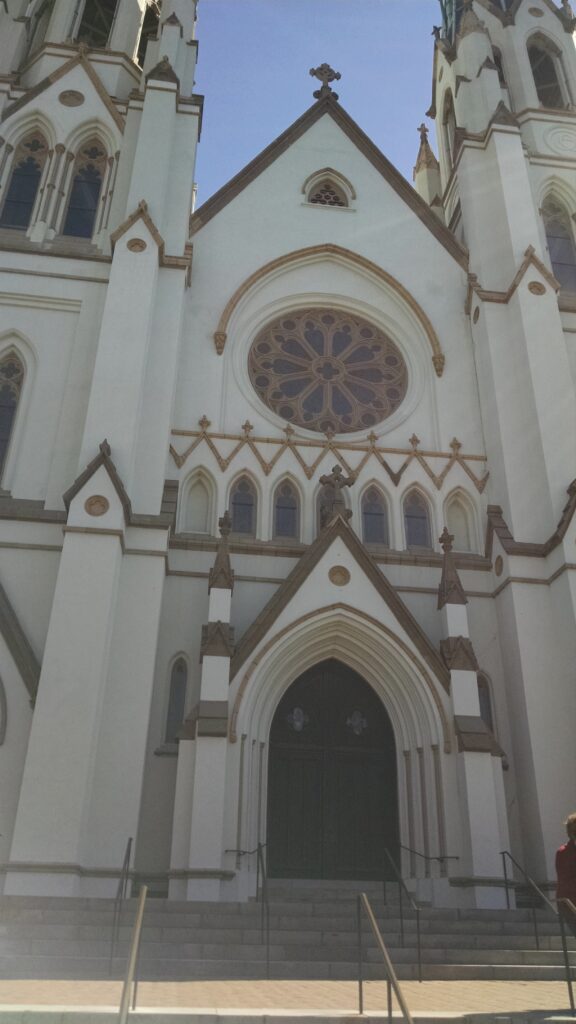
It was a beautiful day in a beautiful place. I kept getting so distracted by the homes and squares that I repeatedly overshot my destination and had to retrace steps. I missed my planned first house visit this way and decided, because of the book and where I was parked, to start with the Mercer Williams House Museum and Carriage Shop. The house was built in the 1860’s and the Mercers never lived there, but they had arranged the building, so the house is named for them. By 1969, James A. Williams purchased it and spent two years renovating it and then made it his home. In 1981, he shot 21-year-old Danny Lewis Hansford, his live-in assistant and lover, claiming self defense. Williams was tried for the murder four times before being acquitted in 1989. By early 1990, he died of pneumonia in the same room as Lewis. His sister kept the house and opened it as a museum. It was a gorgeous place to visit and see both the history of Savannah’s great architecture as well as the effort to preserve it. The shop was also a find.

I am ashamed to admit that, in my bustling around the town, I left poor Tamu in the car and wandered the squares that are a unique feature of Savannah. Pulaski Square, outside Mercer House, provides a monument to the Revolutionary War figure, but they are not sure the bones buried below are really his. I wandered past the Congregation Mickve Israel, which was founded in 1733 and is the third oldest Jewish congregation in the US. Its beautiful building dates to to the 1870s and is built in a Gothic style.
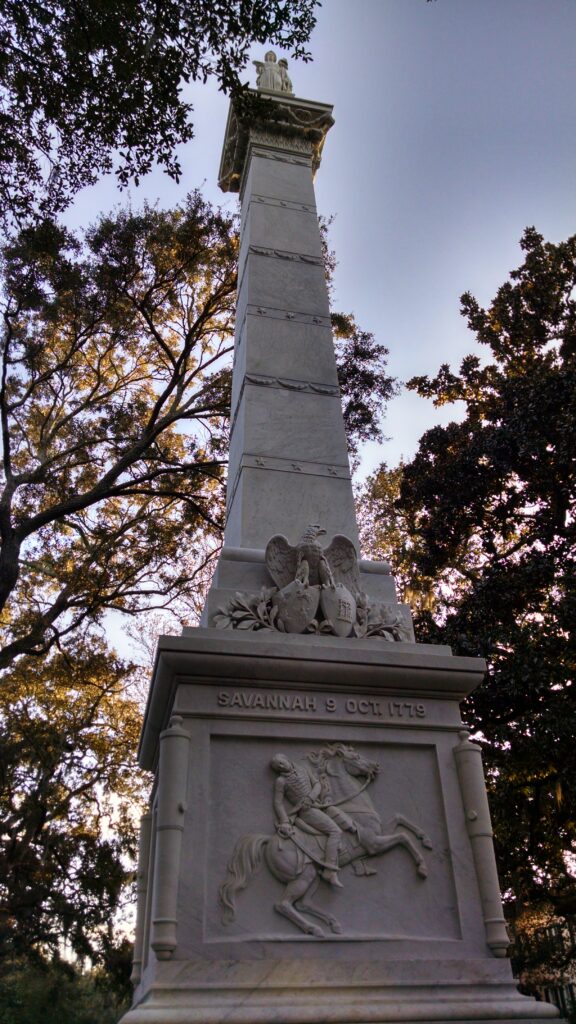
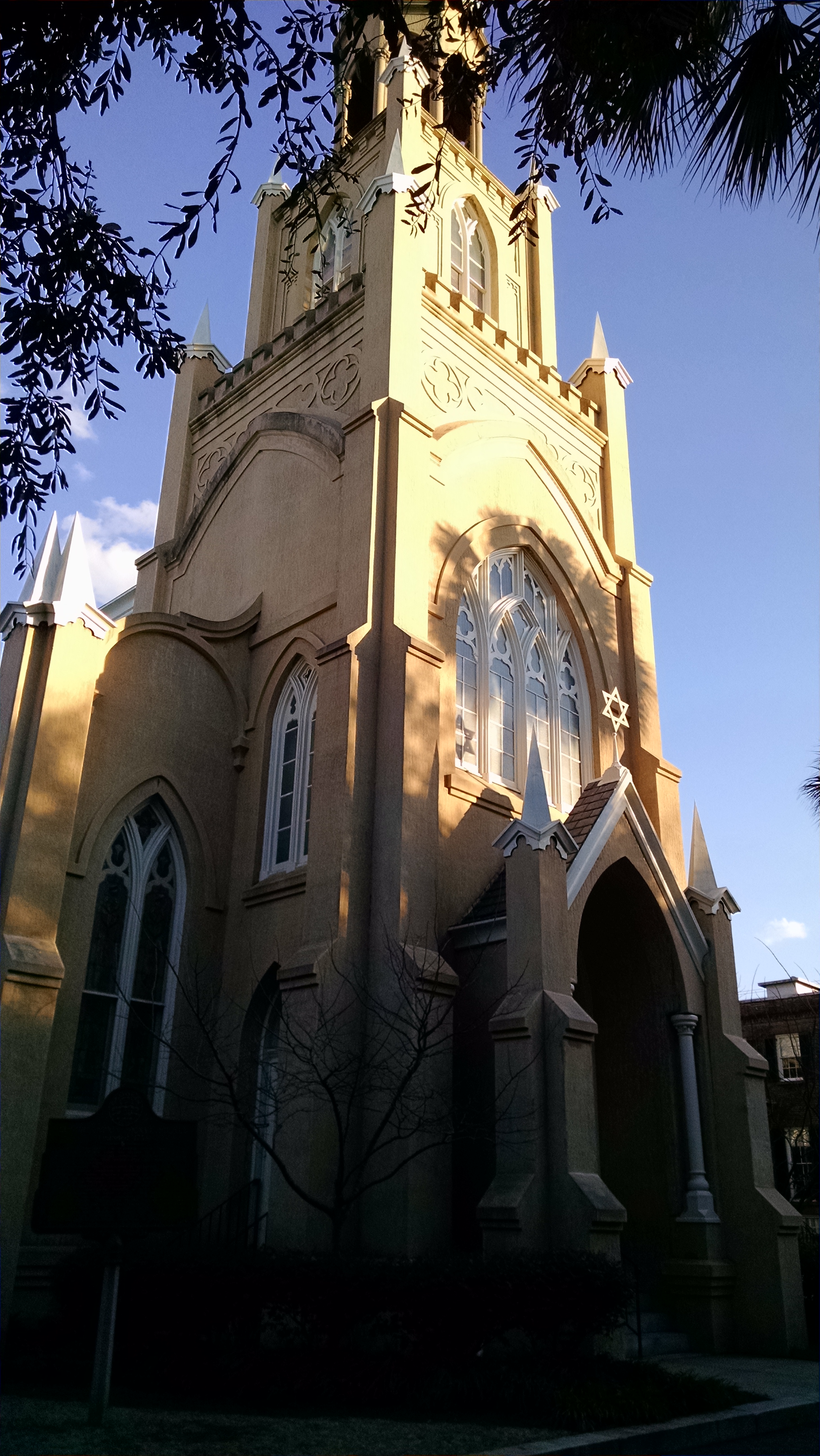
I walked up to Forsyth Park, which is the boundary for the older, historic part of the city. It too is picturesque, with a gorgeous fountain, people, dogs, birds and bicycles congregating there. I did not venture into the other neighborhoods beyond the park because my time was short, but my understanding is that preservationists have turned their attention to these Victorian-era homes now that the original Georgian city has largely been restored. I simply wandered about enjoying the mix of gorgeous weather and gorgeous place, feeling a bit guilty that Tamu was not along for the walk.
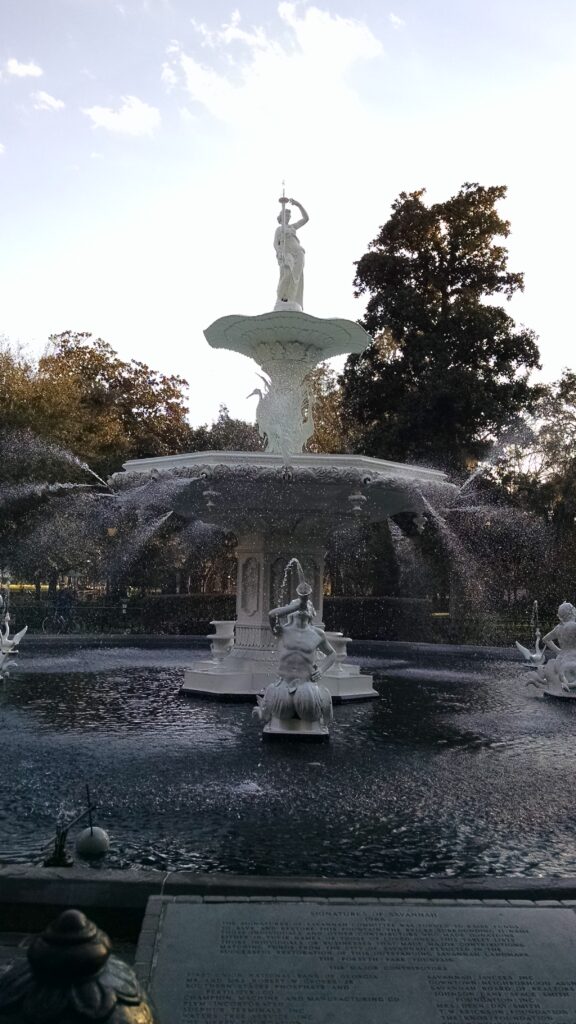
By this point, I was starving, but my pattern of walking past things continued. I planned to have lunch at a different end of the town, near the homes of Juliette Gordon Low, the foundress of the Girl Scouts. I made my way there, and stopped to admire Armstrong House along the way, which was an earlier James A. Williams’ preservation project. It was a gorgeous home. Of course, I missed my mark and walked past the Juliette Gordon Low birthplace, which is owned by the Girl Scouts. They were celebrating their centenary that year, so I imagine there were huge signs near the site. Still, I walked past them. Somebody recommended that I go back to the coffee shop near the Cathedral, but they had nothing substantial and sent me Clarys Cafe, an institution in Savannah offering great food.
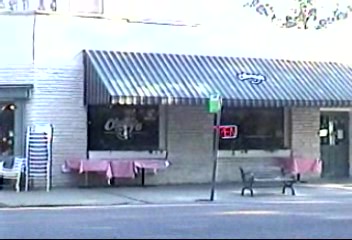
Still Tamu waited while I tried to get in every ounce of time in Savannah. I walked up to Lafayette Square back near the cathedral. The town was designed by James Oglethorpe, who helped found Georgia as a colony in 1732. The Oglethorpe Plan features multiple squares along a grid pattern of streets, so that there is green space within walking distance of every block. Savannah is a very charming model of it. It was nice to engage with the pre-Civil War history of a southern place. Savannah surrendered to Sherman when he marched through the South, so it was not burned to the ground. It was refreshing to think of its colonial history.
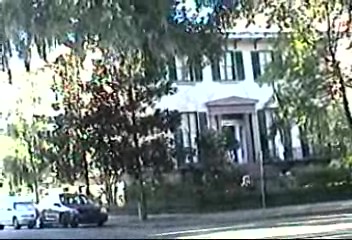
The Juliette Gordon Low birthplace had closed by 4 pm, so I went instead to her marital home, the Andrew Low House, which was the site where she held the first Girl Scout meetings. As his widow, Low bequeathed the house to the Girl Scouts, making it the longest continually operating Girl Scout facility in the country. The Lows had been unhappily married and Juliette was contemplating divorce when Andrew died. So she started the scouting program in the carriage house to the rear. As I was shooting video, I bumped into a gentleman on the street whose daughter had written a history of the Girl Scouts and did considerable research in the Savannah archive. Because of the ill will from the marriage, the Gordon heirs do not share Juliette’s pre-marital belongings with the Low estate. I did the tour of her adult home, and learned that the sale of City Market in the 1950s was the catalyst for the intense preservation efforts. Its destruction rallied seven women to form the Historic Savannah Foundation, which purchased the Davenport House and preserved it. The effort caught on. Like the ladies who saved Mt. Vernon in Virginia, had they not banded together, the historic town would likely have been lost.
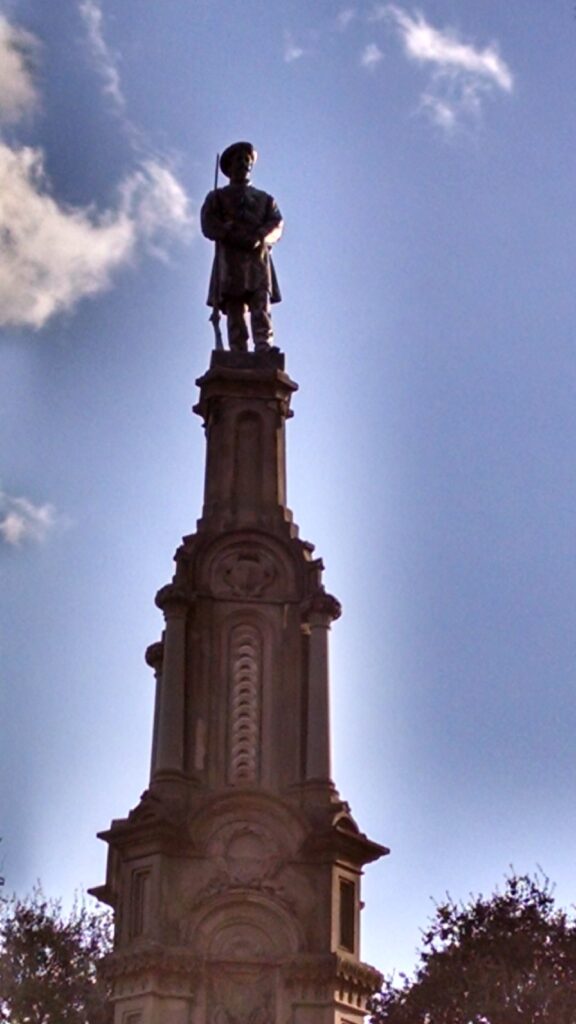
It had been a great day in Savannah for me, but a very boring one for my dog. In my video, I can hear him barking in the last shot and I am surprised that I did not get him out to wander this very dog-friendly town. However, the days were short at that time of year, and I had plans to meet a friend at Fernandina Beach in Florida for the evening to start my journey across that state. So Tamu and I headed out into the December evening knowing we had barely scratched the surface of this magical town and scheming to return.
